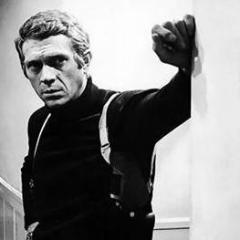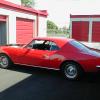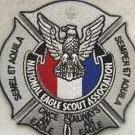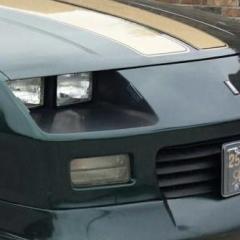
Mark
Members-
Posts
7,131 -
Joined
-
Last visited
Mark's Achievements

MCM Ohana (6/6)
-
Easiest to build: new Revell, AMT, old Revell, in that order. Most working features: old Revell, AMT, new Revell. Closest to stock body/trim: new Revell, other two are a tossup as neither has a stock grille or headlights. Old Revell does have a stock rear bumper that none of the others has, but I believe AMT has stock taillights that the two Revell kits lack. We're talking about the Sixties gassers here. The Revell pro street kit uses the gasser body, it has a modern chassis setup but for reasons unknown has no roll cage, not even a roll bar.
-
If the car's base color is black, red, or some other dark color or earth tone, better make sure the white paint is one that covers well (like One-Shot pinstriping enamel)...
-
Those three are older, promo-based kits. The Galaxie didn't need a separate hood as AMT made another Galaxie at the time that had one. The '70 Wildcat may have been announced as a 3-in-1 kit (several 1970 3-in-1s were announced but never appeared). But there was a '69 Wildcat kit with an engine, and it probably didn't sell well. They're hard to find now. So the '70 only appeared as an unassembled promo. The ones being designed now (including the coming '60 Chevy wagon and '65 Barracuda) will all have the separate hood and engine insert, to give a head start on an engine installation for those who want it.
-
Corvairs Through the Darien Gap
Mark replied to Falcon Ranchero's topic in General Automotive Talk (Trucks and Cars)
Chevrolet concentrated on the sportier Corvairs because not enough people were buying the ordinary ones. Ford's Falcon was running away from the Corvair sales-wise. They rushed out the Chevy II (pretty much a Falcon copy except for a couple of things GM wanted to experiment with--the bolt-on front end structure, and the single-leaf rear springs that they had been messing with for a few years prior). Chevrolet's own dealers weren't crazy about the Corvair either; the Chevy II bore that out. Why bother with a rear-engine car that required more training and a few special tools, when you could sell a car with a cast-iron engine up front, driving the rear wheels, like everything else Chevrolet sold. And, which, the average dealer mechanic could beat the flat-rate time for most repairs without having to learn anything new. The Monza might not have happened either. Ed Cole at first wanted all Corvairs to have automatic transmissions. That might have dulled the effect of a sportier Corvair. The sales people pushed for a manual transmission for the base model to keep the entry-level price down. Had GM pushed other divisions to take the Corvair (Pontiac was closest to getting it, though all divisions except Cadillac were offered it) the rear-engine car might have been better accepted by the general public. Still, it probably wasn't needed, the Chevy II did just fine in that segment. -
You might take a look at the "crossfire" twin throttle body fuel injection intakes from some early Eighties GM car kits. I know MPC Camaros and Firebirds had them, AMT '83 Camaro probably had it, MPC '82 Corvette should have it but does not. Reworking the top of one of those to fit the single carb should end up looking very close to what you want.
-
The flip nose chassis (shared with the MPC '57 Chevy) looks more like a stretched Willys frame than either a Ford pickup or Tri-Five bowtie frame. The front axle in those kits is on the spindly side, a break waiting to happen especially if you put solid front tires on it.
-
Most issues of the AMT '32 Ford roadster include a non-stock two-fours intake for an early Hemi. The only stock ones are in the Moebius and AMT letter series Chrysler kits.
-
Johan Superbird - Sox Martin version
Mark replied to gtx6970's topic in Model Building Questions and Answers
I'm pretty sure those are the correct decals for the original kit. Jo-Han may have messed with the later issue so they could drop the same sheet into the reissue and the ongoing Barracuda kit. -
Wonder if Do Bee has any brothers...
-
The Ford Super Mustang dragster
Mark replied to gtx6970's topic in Model Building Questions and Answers
Interesting car, but it was a big time fail so it wasn't shown long. I always thought AMT loosely based their Hippie Hemi dragster on it. You could start with one of those, or the Garlits Wynns Jammer (same chassis) then grab an AMT Digger 'Cuda and use the body as a starting point, cutting it down every which way and getting rid of the roof. -
Johan Superbird - Sox Martin version
Mark replied to gtx6970's topic in Model Building Questions and Answers
Too, the tires and slicks in the original kit will be one-piece, hollow, and have Goodyear markings on both sides. They were later changed to Firestone Drag 500 on one side (still one-piece and hollow). Another, later revision made the front tires solid and the slicks two-piece. Some of those drag cars had radiator hoses molded in vinyl along with the (early) tires. -
Some of the kits previously available as Enthusiast Series have also been released minus engines, and with a much lower parts count. Finding a parts count will indicate which version is being offered (lack of a parts count will probably point to the simpler version). Same exterior details (separate door handles, windshield wipers, and so on), just an engine dummy instead of an actual engine.
-
Johan Superbird - Sox Martin version
Mark replied to gtx6970's topic in Model Building Questions and Answers
The wheels should be the only difference. The Sox & Martin version differs pretty much in wheels and tires only, as well as not including the stock air cleaner setup nor the NASCAR parts. The Keystone wheels are different from those in the Sox & Martin Barracuda kit. The Superbird wheels are the same for front and rear, while having different inner wheels. -
Johan Superbird - Sox Martin version
Mark replied to gtx6970's topic in Model Building Questions and Answers
Jo-Han only brought back the Sox & Martin version just to say they had something "new". After the USA Oldies series petered out (probably due to lack of usable tooling), Jo-Han reissued two items at a time for most of the Eighties. One year it was the Rebel Machine and (I think) '68 Chrysler 300, another year the AMX and maybe the '70 Eldorado, and so on. The '63 Plymouth was somewhere in there too, along with the Superbird. Some items got reissued as X-EL promos only. The '68 Cadillac was only issued as a convertible in kit form, but a hardtop promo did appear.





